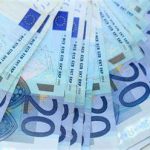The Intricacies of Counterfeit Currency: Understanding Quality and Legal Implications
While the term "counterfeit money" frequently conjures images of criminal activity and dubious transactions, the truth is that the production and distribution of counterfeit currency include a series of inspirations and effects that can be as complex as they are unlawful. The development of digital resources and technologies has actually made discussions on counterfeit money more common, leading people to explore different elements of this underground world. Comprehending the nuances of top quality counterfeit money, and the possible implications of engaging with it, is vital for anyone thinking about the subject.
Defining Counterfeit Currency
Counterfeit currency describes costs or coins produced with the intent to trick, designed to imitate genuine currency provided by a federal government or reserve bank. Quality is typically assessed based on numerous factors, consisting of:
Materials Used: High-quality counterfeit notes might use comparable paper, ink, and security features found in genuine currency.
Information and Design: A focus on reproducing great details, such as watermarks or holograms, is crucial for creating credible fakes.
Printing Techniques: Sophisticated approaches, often utilizing commercial-grade printing devices, allow the production of convincing replicas.
The Economics of Counterfeiting
The factors individuals or groups take part in counterfeiting can be differed, however frequently consist of the following elements:
Earnings Motive: Counterfeiters often run in the shadows to maximize their profits through the distribution of fake currency.
Accessibility: The accessibility of innovative printing innovations has made it easier for counterfeiters to produce top quality notes.
Need: The undercurrent of demand for counterfeit money exists due to the bargaining power it may pay for to some individuals or companies.
Nevertheless, participating in the production or distribution of counterfeit currency is illegal, with extreme legal consequences.
Legal Implications
Diving into the world of counterfeit money brings with it serious legal repercussions, including:
Criminal Charges: In numerous jurisdictions, producing or dispersing counterfeit currency is a felony. Convictions may result in lengthy prison sentences and substantial fines.
Civil Liability: Beyond criminal charges, individuals may find themselves dealing with civil claims from those hurt by the blood circulation of counterfeit notes.
Cops Investigation: Engaging with counterfeit currency often brings in the attention of police, leading to examinations and possible arrests.
This legal structure stresses that the appeal of counterfeit currency is filled with risk.
The Quality Factor: What to Look For
Premium counterfeit currency can be tough to differentiate from the real thing, particularly as technology continues to advance. Here are some key indications that individuals often try to find when evaluating the quality of counterfeit notes (although one should bear in mind that ownership or circulation of counterfeit currency is illegal):.
Paper Quality: Genuine currency uses a particular type of paper which contains a particular ratio of cotton and linen, making it more durable than routine paper.
Color Shifting Ink: Many genuine banknotes feature color-shifting ink that changes color when seen from various angles. Premium counterfeits might duplicate this function, though badly.
Watermarks: Most currencies include watermarks that are noticeable when held up to light. Counterfeit recreations may fall short in simulating this hallmark.
Security Threads: Genuine currency has actually embedded security threads that can be found by touch; quality counterfeits might not reproduce this function precisely.
Microprinting: The use of microprinting (little text that appears fuzzy to the naked eye) is another typically poorly replicated function.
The Risks of Counterfeiting.
Engaging with counterfeit money surpasses legal implications; there are considerable threats included, including:.
Financial Loss: Even if one successfully acquires counterfeit currency, there is constantly the risk of getting caught, causing monetary loss alongside legal issues.
Social Consequences: Being included in unlawful activities can taint one's credibility and relationships, both individual and professional.
Increased Law Enforcement Scrutiny: Buying or offering counterfeit money stimulates the interest of law enforcement, potentially causing examinations that put people at higher risk.
Frequently asked questions.
1. Is it unlawful to own counterfeit money?
Yes, possessing counterfeit money is unlawful, and people may face criminal charges for merely holding or trying to utilize such currency.
2. What should I do if I mistakenly receive counterfeit currency?
If you suspect that you have gotten counterfeit money, do not try to spend it. Rather, report the occurrence to your regional authorities or the banks where you got the counterfeit note.

3. Exist genuine usages for counterfeit currency?
No. There are no legitimate usages for counterfeit currency. However, some individuals might develop props for educational, artistic, or film purposes and can get unique authorization for this under particular laws.
4. How can I protect myself from counterfeit currency?
Stay Informed: falschgeld kaufen bitcoin with the features of genuine currency.
Usage Anti-Counterfeit Tools: Tools such as UV light detectors can assist identify counterfeit notes.
Be Cautious in Transactions: Be wary of accepting cash in situations that feel questionable, and make deals in reliable environments.
Conclusion.
The world of counterfeit currency is swarming with danger, legal consequences, and ethical predicaments. While the allure of top quality counterfeit notes might be intriguing to some, it is vital to remember the legal and social repercussions that accompany involvement in such activities. Instead of browsing the dirty waters of counterfeit money, individuals are encouraged to look for legitimate avenues for financial transactions, focusing on stability and legality in their economic pursuits.
